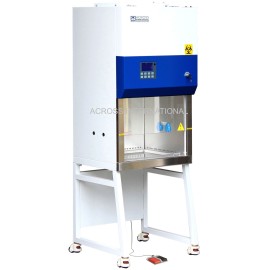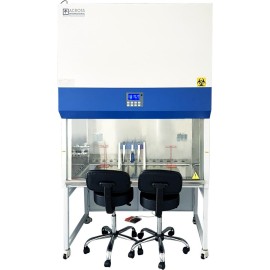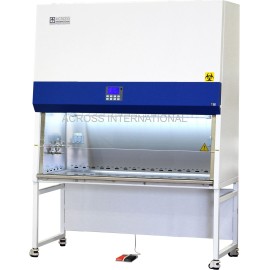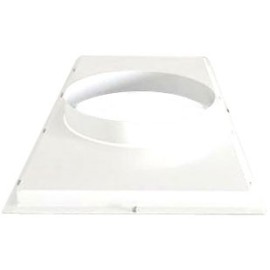No products
Product successfully added to your shopping cart
There are 0 items in your cart. There is 1 item in your cart.
Bio Safety Cabinets
- Closed Loop Extractors
- Turn Key Extractor Systems
- Extractor Parts & Accessories
- Vacuum Pumps
- Recovery Pumps
- Solvents
- Solvent Tanks
- Lab Equipment
- Carbon Chemistry
- Terpenes
- Dry Ice
- Safety Equipment
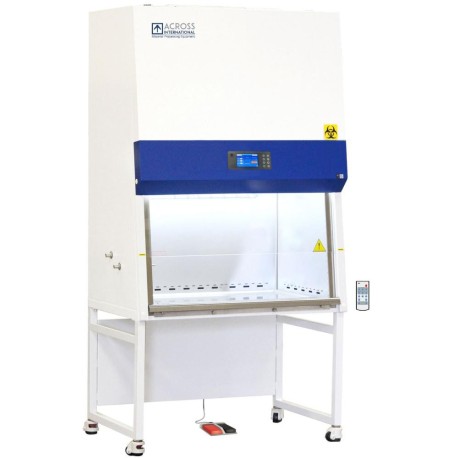 View larger
View larger
NSF Certified 3 Ft Class II Type A2 Biosafety Cabinet
New
The primary purpose of a BSC is to serve as a means to protect the laboratory worker and the surrounding environment from pathogens.
More info
A biosafety cabinet, also called a biological safety cabinet or microbiological safety cabinet—is an enclosed, ventilated laboratory workspace for safely working with materials contaminated with (or potentially contaminated with) pathogens requiring a defined biosafety level.
The primary purpose of a BSC is to serve as a means to protect the laboratory worker and the surrounding environment from pathogens. All exhaust air is HEPA-filtered as it exits the biosafety cabinet, removing harmful bacteria and viruses. This is in contrast to a laminar flow clean bench, which blows unfiltered exhaust air towards the user and is not safe for work with pathogenic agents. Neither are most BSCs safe for use as fume hoods. Likewise, a fume hood fails to provide the environmental protection that HEPA filtration in a BSC would provide. However, most classes of BSCs have a secondary purpose to maintain the sterility of materials inside (the "product").
Class I cabinets provide personnel and environmental protection but no product protection. In fact, the inward flow of air can contribute to contamination of samples. Inward airflow is maintained at a minimum velocity of 75 ft/min(0.38 m/s). These BSCs are commonly used to enclose specific equipment (e.g. centrifuges) or procedures (e.g. aerating cultures) that potentially generate aerosols. BSCs of this class are either ducted (connected to the building exhaust system) or unducted (recirculating filtered exhaust back into the laboratory.
Class II cabinets provide both kinds of protection (of the samples and of the environment) since makeup air is also HEPA-filtered. There are five types: Type A1 (formerly A), Type A2 (formerly A/B3), Type B1, Type B2 and Type C1. Each type's requirements are defined by NSF International Standard 49, which in 2002 reclassified A/B3 cabinets (classified under the latter type if connected to an exhaust duct) as Type A2, and added the Type C1 in the 2016 standard. About 90% of all biosafety cabinets installed are Type A2 cabinets.
- NSF certified
- Great for COVID-19 specimen handling
- Motorized front glass viewing window with remote foot switch
- Dual HEPA filters with life indicator
- UV light life indicator
- Waterproof in-chamber power sockets
- Large LCD display
- Easy-to-clean stainless steel chamber
- Special treated unit housing with anti-mold and antiseptic coating
- Auto start and stop function (e.g. UV lights)
- Automatic flow speed adjustment
- Pneumatic front panel supports for easy maintenance
Attention! Steps before and after using the unit.
- Step 1: Fully close the front glass panel, turn on UV light for 30 mins (you can use the timer setting). Users should leave the room during this disinfection period.
- Step 2. Raise the glass panel to recommended opening height, turn on air circulation for 10 minutes.
- After operation is done, fully close the glass panel and turn on UV light for another 30 minutes for decontamination.
- No flammable and explosive substances (Building up of flammable material may cause an internal fire or explosion)
- No volatile chemicals (May cause damage to HEPA filters to the point where it allows particles to leak through)
- No toxic chemicals or materials (May reach room occupants)
- No open flame (Will disrupts air flow patterns)
- Minimal use (10mL or less) of decontaminant, such as 70% isopropyl or ethyl alcohol is allowed.
- We recommend using the following for disinfecting the surfaces of a BSC, depending on the agent to be controlled: Sodium hypochlorite (bleach), Ilodophors (Wescodyne), Phenolics (Hilphene, Vespene) and Quaternary ammonium compounds (Conflikt, EndbacII)
- If gaseous, vaporized or aerosolized chemicals must be generated in a BSC, you should assure yourself that the quantity being generated will NOT cause a flammable or toxic risk.
No customer reviews for the moment.





